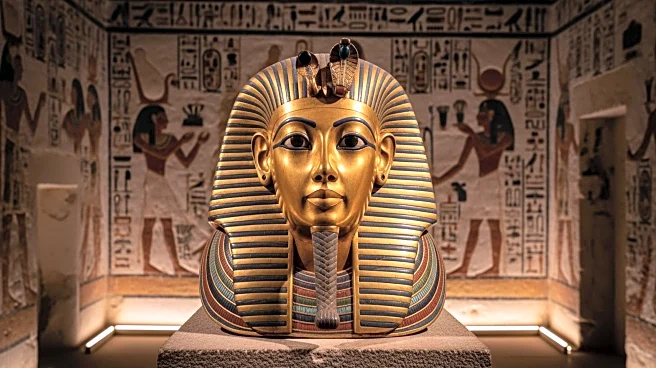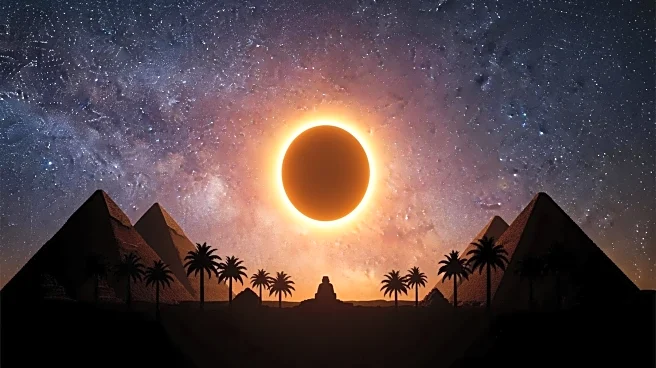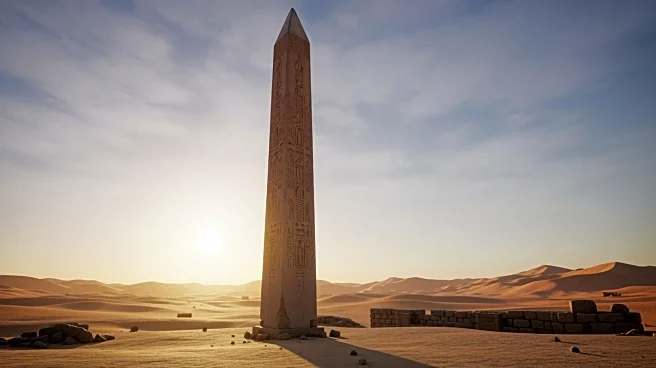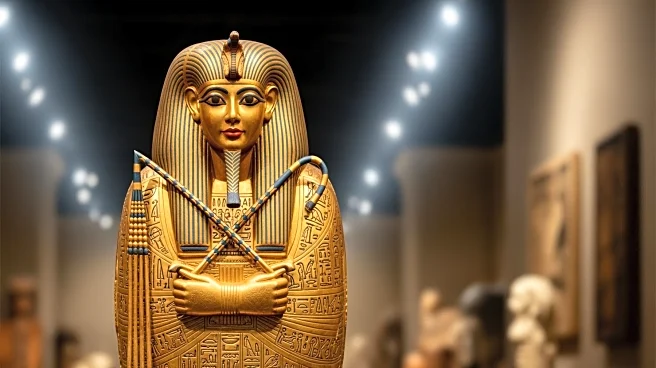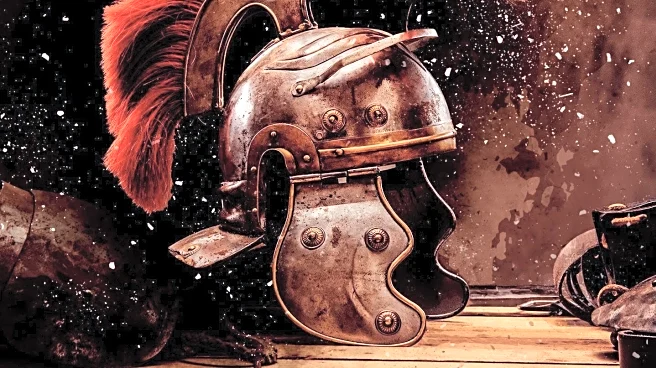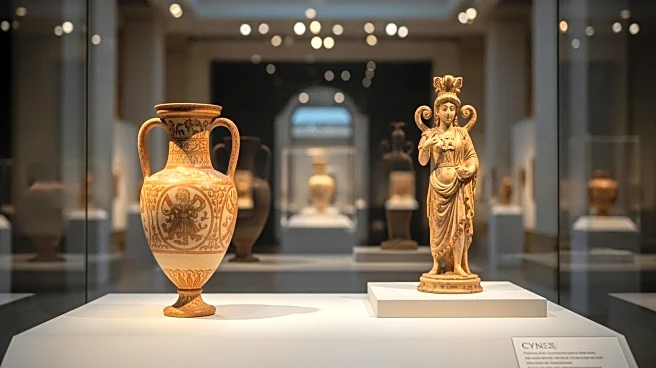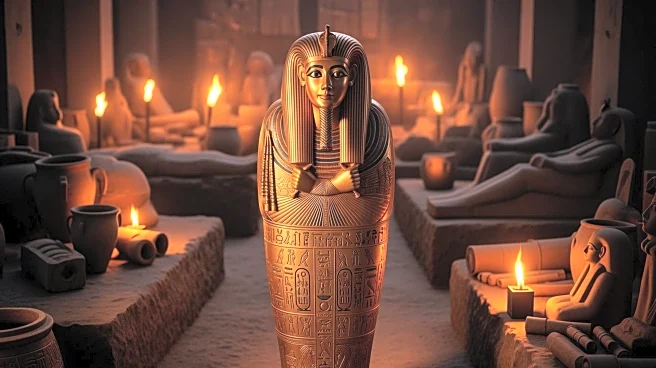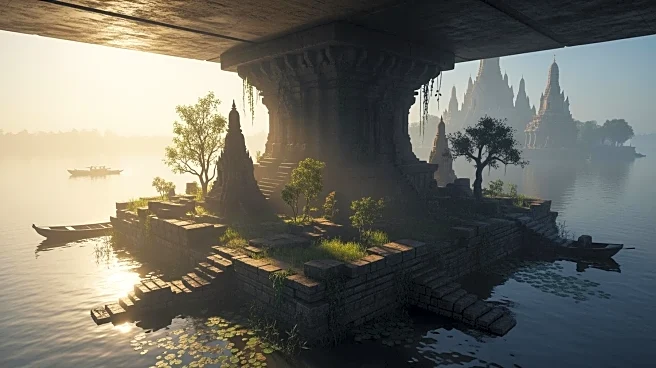What's Happening?
Archaeologists have unearthed three 3,000-year-old tombs in Luxor's Dra Abu el-Naga, revealing the lives of New Kingdom officials who were not pharaohs. The tombs belonged to individuals associated with the cult of Amun, including Amun-em-Ipet, Baki,
and an official referred to as 'S.' These individuals held influential roles within the religious and political systems of ancient Egypt. The tombs contain murals and carved reliefs depicting banquets and offerings, central to sustaining the dead in the afterlife. The discovery sheds light on the daily operations of the state and the role of non-royal elites in ancient Egypt.
Why It's Important?
This discovery provides valuable insights into the social and administrative structures of ancient Egypt, highlighting the roles of non-royal elites in shaping religious and political systems. By understanding the lives and duties of these individuals, historians can gain a deeper understanding of the complexities of ancient Egyptian society. The findings contribute to the broader narrative of Egypt's history, offering a more comprehensive view of the interactions between different social classes and their contributions to the state's functioning.
What's Next?
The excavation team plans to conduct thorough documentation and conservation efforts to preserve the tombs and their contents. This includes mapping paint layers, translating inscriptions, and stabilizing damaged areas. Comparisons with older tombs in the necropolis are underway to understand patterns of reuse and structural modifications. The findings will be detailed in a scientific report and contribute to upcoming displays at the Grand Egyptian Museum, enhancing public understanding of ancient Egyptian history.
Beyond the Headlines
The discovery of these tombs highlights the importance of preserving archaeological sites and the ethical considerations involved in excavation. It underscores the need for collaboration between archaeologists and local communities to ensure that cultural heritage is respected and preserved. The findings also prompt discussions on the long-term impact of archaeological discoveries on tourism and education, as they offer new opportunities for cultural engagement and learning.
